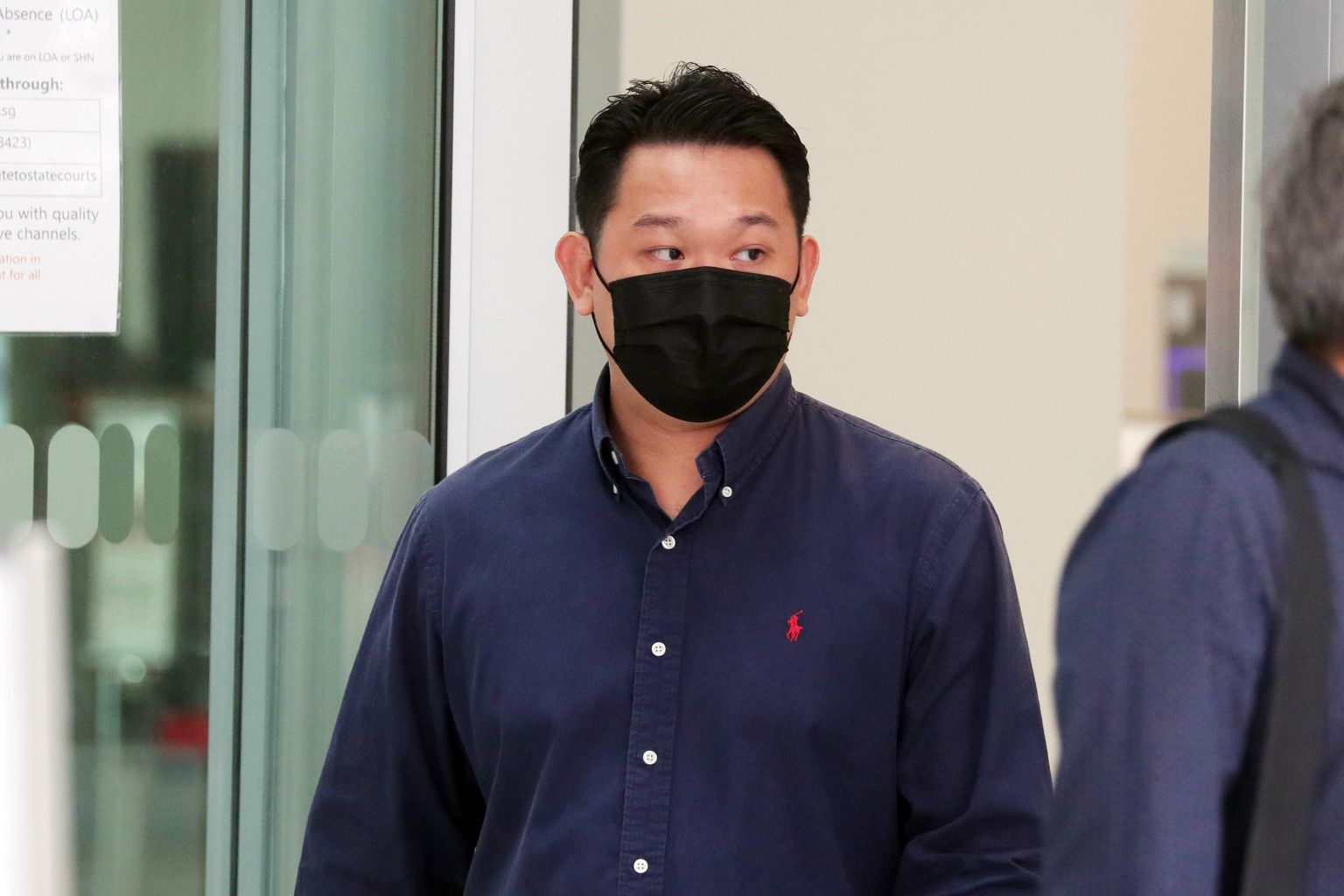SINGAPORE - An inquiry committee that looked into the Tuas explosion which killed three workers in February last year has concluded that criminal offences have been disclosed in the tragedy.
They relate to actions, or lack of actions, by Stars Engrg, sole director Mr Chua Xing Da, and production manager Mr Lwin Moe Tun.
In the committee's 89-page report, released on Friday (March 25) afternoon, Senior District Judge Ong Hian Sun, the committee's chairman, said there may be breaches under the Workplace Safety and Health Act (WSH) and Penal Code.
The public prosecutor is studying the committee's report, said the Ministry of Manpower (MOM).
In its report, the inquiry committee said: "It is timely that we send a clear and cogent message that a callous and cavalier attitude towards the safety of workers will not be condoned and all stakeholders must do their parts."
MOM said the inquiry committee had also laid out enhancements to the WSH and other recommendations, which the Government has accepted.
These include encouraging buyers of industrial equipment to certify their equipment to an industry safety standard, requiring companies that handle prescribed amounts of specified combustible powders to register or notify the authorities, and more outreach efforts specifically for small- and medium-sized enterprises (SMEs) to educate them on ways to keep workers safe.
The accident happened on Feb 24 at around 11.20am when an over-pressured mixer machine exploded in the Stars Engrg workshop at 32E Tuas Avenue 11, injuring 10 workers including eight employees of the company.
Three of the employees - Mr Subbaiyan Marimuthu, 38, Mr Anisuzzaman Md, 29, and Mr Shohel Md, 23 - died from severe burns that covered 90 per cent of their bodies.
Of the remaining five injured employees, two have received compensation and returned home, while compensation payouts for two other employees are pending.
The medical assessment linked to the compensation claim for the remaining employee is pending, said Senior Minister of State for Manpower Zaqy Mohamad on Friday during a press conference on the findings of the inquiry committee.
The other two workers were working in a nearby unit and suffered minor injuries.
The inquiry committee heard that the company's director Mr Chua had purchased the mixer machine on e-commerce site Alibaba.

Stars Engrg used it to make an insulation material called fire wrap by heating up an oil jacket that wrapped around the main mixer compartment of the machine.
Ingredients such as potato starch and water were then combined in the mixing compartment to construct fire clay.
The fire wrap is made by wrapping the fire clay with other components such as ceramic fibre and fibreglass within aluminium sheets.
But the machine developed a number of problems prior to the blast, the inquiry committee, which was appointed on March 2 last year, heard.
Among the issues - the heaters glowed red and caught fire, workers heard the sound of something boiling in the oil jacket, and cracks also formed in the oil jacket, with oil and smoke leaking out of the jacket.
Mr Marimuthu was worried enough to raise his concerns about the machine with Mr Chua.
The worker also sent a photo of the machine to Mr Lwin Moe Tun two minutes before the explosion.
The inquiry committee said the accident was rooted in the unsafe use of the mixer machine.
Stars Engrg had failed to use enough thermic oil in the oil jacket - a heat transfer fluid - causing it to overheat.
The company also failed to properly attach a temperature sensor on the jacket.
The report added that two vents on the machine were also sealed off, which led to over-pressurisation of the oil jacket.
The repeated heating and cooling cycle with each operation of the mixer machine also stressed the oil jacket's integrity, resulting in the oil jacket eventually losing its mechanical strength.
"This was exacerbated by the weakening of the weld seams due to poor quality repair welds done by Stars Engrg's workers.
"As a consequence, the oil jacket ruptured outwards at the weak points, fracturing at the weld seams," the inquiry committee said.
The initial rupture of the oil jacket resulted in the explosion, and the subsequent flash fires were most likely caused by the combustion of the potato starch powders which were allowed to accumulate at the worksite, the report said.
"This fateful accident serves as a solemn reminder that even an inherently safe machinery has the potential to cause a catastrophe if improperly used," the inquiry committee said in its report.
The public hearings were held over two tranches from September to November last year, with Senior State Counsel Ms Kristy Tan leading the evidence.
Stars Engrg was represented by Rajah & Tann lawyers led by Mr Thong Chee Kun.
During the hearings, Mr Lwin Moe Tun admitted to deleting the photo of the damaged mixer from Mr Marimuthu's phone, which the worker sent just before the explosion, and two messages the production manager sent in response.
The inquiry committee concluded that there was sufficient evidence to show that Stars Engrg, Mr Chua and Mr Lwin Moe Tun had committed criminal offences.
The company, it said, had failed in its legal duty to ensure the safety and health of all its employees.

As for Mr Chua, the inquiry committee found that despite having insufficient knowledge of how the mixer machine was to be safely used for its intended design, he had installed and commissioned the mixer machine by himself.
"Chua had made ill-founded assumptions when dealing with the operation, modifications, and failures of the mixer machine, and had been the person responsible for instructing Stars Engrg's workers on dealing with the mixer machine," the inquiry committee said.
He is also potentially liable for obstructing the course of justice when he lied to MOM investigators and failed to mention that Mr Lwin Moe Tun had deleted the WhatsApp messages.
The charge of failing to ensure the safety and health of all its employees carries a fine of up to $500,000. Obstructing the course of justice carries a jail term of up to seven years, a fine, or both.
Mixing machine not a high-risk equipment
The inquiry committee said the mixing machine which exploded in the accident is generally not a high-risk equipment when properly used.
It added that the combustible powders were also commonly used in the industry as well as in households, such as flour and sugar.
“Hence, the inquiry committee is minded not to recommend knee-jerk reactions that could result in over-regulation and impose excessive regulatory burden on the economy,” said the three-member committee.
However, it added that the accident has shown that more could be done to enhance the existing regimes in order to prevent a similar accident.
Aside from Judge Ong, the committee included two assessors – Mr Lucas Ng Hong Kiang, an engineer and general manager of plant at Petrochemical Corporation of Singapore; and Dr Peter Nagler, chief innovation officer of Agency for Science, Technology and Research (A*Star).
Here are some of the key findings and recommendations, which the Government has accepted:
Causes of the explosion:
- Liquid thermic oil in the machine was over-heated and two vents in the mixer machine were closed, which meant the oil jacket operated as a closed system when it was designed to be operated as an open system
- This led to over-pressure in the mixer machine’s oil jacket, which resulted in mechanical failure and fracture of the welds.
- When the welds fractured, thermic oil was forced out and aerosolised into an oil mist or fine droplets. These were ignited, resulting in the explosion.
- The blast ignited the accumulated potato starch powder that was suspended in the air, resulting in subsequent flash fires.
The mixer machine was also operated in an unsafe manner:
- The temperature within the oil jacket was not being properly monitored.
- There was insufficient thermic oil in the mixer machine’s oil jacket. This caused inefficient heat transfer and the overheating of the thermic oil.
- The mixer machine was operated as a closed system
The inquiry committee found other gaps that contributed to the accident or worsened the injuries sustained by the workers.
They include:
- Lack of competent personnel to commission and operate the mixer machine, and identify and solve the problems arising from the use of the machine
- Inadequate risk assessment including not addressing the numerous warning signs
- Lack of a comprehensive emergency response plan, which should indicate the escape route and response procedures
- Not providing or ensuring workers wore suitable personal protective equipment such as fire retardant clothing
Recommendations by the inquiry committee:
- Buyers of industrial equipment are encouraged to certify their purchased equipment
- The Workplace Safety and Health Act to be reviewed and expanded to ensure that additional duties are imposed on manufacturers, suppliers, installers and those who modify types of machinery such as those powered by mechanical, electrical and hydraulic energy
- Suppliers of materials that pose a defined level of combustible dust hazard to include a label informing on the hazard before selling or redistributing
- Companies that handle prescribed amounts of specified combustible powders to register with or notify the authorities
- Occupiers to inform building owners or landlords on the use of combustible powders
- To conduct more outreach and guidance efforts, specifically directed towards small- and medium-sized enterprises, as well as workers who may be at risk

Workers remain in Singapore
Three of the five employees of Stars Engrg who survived the explosion remain in Singapore.
Mr Zaqy said the claims for two of them have been completed and they will be receiving payouts, while the claim for the final employee is pending a medical assessment.
“In the meantime, their living and medical expenses are being paid for by Stars Engrg,” said Mr Zaqy, without disclosing the identities of the workers who have returned home.
Of the 10 workers injured in the explosion, eight were employees of Stars Engrg.
Mr Marimuthu is from India, while the rest of the injured employees are from Bangladesh.
The two other workers, who suffered minor injuries, were employed by P3 Project, an engineering company in a nearby unit.
The injured:
Mr Mehedi, 22
- 58 per cent burns to face, neck, scalp, chest, arms, back, buttocks and left leg
- Loss of strength and mobility in fingers
- Eyes permanently damaged. His vision is blurry and he has to wear sunglasses when out in the sun
Mr Hossain Jitu, 32
- 54 per cent burns to face, neck, chest, back, arms and legs
- Skin beneath eyes burned, unable to close eyes and sleep after incident
- Loss of strength in hands
- Unable to open mouth fully
Mr Molla Md Yousuf, 28
- 35 per cent burns to face, neck, scalp, arms, chest and right foot
- Vision blurry
- Involuntary spasms
Mr Rahad Asfaquzzaman, 30
- 48.5 per cent burns to face, neck, scalp, arms, chest, back and left foot
- Vision blurry, unable to produce tears when crying
- Loss of strength in hands
Mr Ahmmed Lizon, 27
- 37 per cent burns to face, neck, scalp, arms, back, abdomen, left knee and foot
- Dry eyes requiring eye drops every two hours
Mr Miah Md Azam, 36 (Employed by P3 Project)
- Minor burns to back of head
Mr Zhao Jian Wang, 43 (Employed by P3 Project)
- Minor burns to face, neck, arms and hands
- Blisters on back of neck



